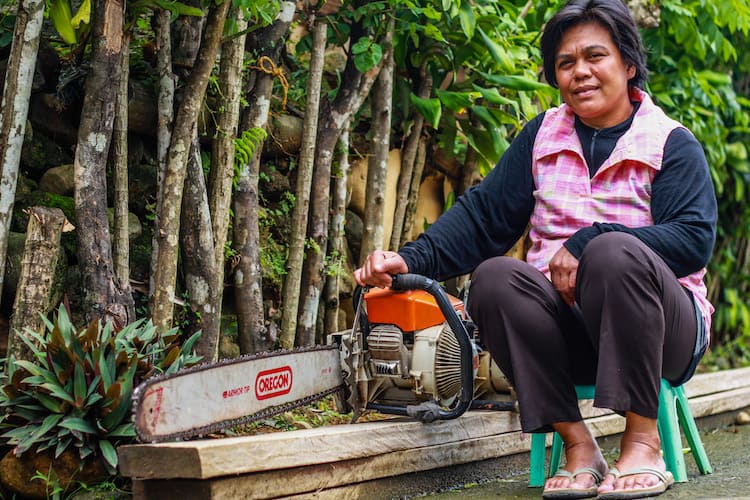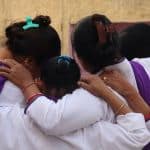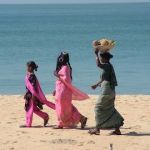Finance Responds to Climate Change: How ‘Recovery Lending’ Can Help Victims of Weather-Related Disasters
Only a hardened climate change sceptic could deny the huge increase in catastrophic hurricanes, droughts, floods and other extreme weather-related events in recent years. We have witnessed it first-hand of late with the mudslides in California and “snow bomb” conditions on the East Coast of the U.S. While natural disasters like these have devastating impacts on American communities and their residents, these people generally have an insurance safety net in place to help them rebuild.
When similar shocks happen in places across the world with a poorer population – where people have extremely small incomes and no insurance – it is almost impossible to recover fully. These events can permanently harm livelihoods and force families into multigenerational poverty. In fact, every year natural disasters force 26 million people further into poverty. It’s no exaggeration to say that climate volatility is becoming the major factor in determining which communities will suffer long-term poverty.
The research also shows that disasters like hurricanes and severe droughts cost $30 billion a year across 77 of the world’s poorest countries. While in high-income countries almost half of these costs are covered by insurance, in poorer countries less than 5 percent are covered, and humanitarian appeals remain underfunded. With little financial protection, vulnerable people face more hardships, often leading to life-changing decisions, such as taking children out of school – and sometimes putting them to work. The consequences of these decisions can endure across generations.
Faster recovery
This is where recovery lending comes into play. The focus of recovery lending is to provide prompt assistance to protect and restart economic activities, complementing the relief aid that addresses people’s critical and urgent survival needs when disasters strike. Recovery lending is about helping people help themselves, and essentially consists of small loans with special terms, which are disbursed immediately during and after disasters to people living below the poverty line. These loans support agricultural smallholdings and affiliated businesses, and protect people’s livelihoods by ensuring that their businesses are rebuilt following climate shocks – with the aim of restoring income streams as quickly as possible. Unfortunately, most financial institutions’ usual practice after a disaster would be to significantly reduce lending and tighten credit terms – reducing credit and cash in these communities just when they need it most.

Linel holds her chainsaw, which she purchased with a recovery loan from VisionFund for cutting fallen trees from Typhoon Haiyan in the Philippines.
VisionFund International pioneered this type of lending as a response to Typhoon Haiyan in the Philippines – one of the strongest storms ever recorded – supporting more than 5,000 families in their recovery efforts. Another of our recent recovery lending projects supported 14,500 families in rural areas of Kenya, Malawi and Zambia, who were dealing with the severe effects of droughts and floods caused by 2015/2016’s very strong El Niño. Funds helped clients to avoid extreme poverty by quickly re-establishing their farming businesses and diversifying their income to help bridge the gap between planting seasons.
Reaching for greater scale
The African and Asian Resilience Disaster Insurance Scheme (ARDIS) is a new programme, built by VisionFund International, Global Parametrics and the InsuResilience Investment Fund. It is the first of its kind to use advanced climate science-based financial tools – essentially science-led analysis of “big data” on the climate to model and forecast climate patterns to give financial estimates of risk, and so to deliver a sustainable funding mechanism for recovery lending. This approach involves the provision of contingent liquidity and risk capital to VisionFund’s microfinance institutions, triggered by climate-related events. This capital bolsters their resources to cope with increased demand and restores their balance sheets during a time when many clients cannot immediately repay loans, ensuring business continuity and the enhancement of services despite the common disruptions created by such calamities.
This scheme means that 690,000 families in six countries now have access to recovery lending when they need it – and it ensures that the resources are in place to deliver it for them.
The programme is expected to protect a total of 4 million people living below the poverty line in rural areas, helping farmers, their families and their communities mitigate the effects of climate risk. It also aims to meet 1 percent of the G7 goal to increase access for up to 400 million uninsured people to insurance products that protect against the very real impacts of climate change. However, this is just the start: We are seeking to expand and extend this scheme, including by adding new countries, launching an innovative flood cover and looking towards other organisations following our lead to help the lives of the climate-challenged poor.
We have helped thousands of families already, and we now have secured an innovative funding source to ensure that we can help hundreds of thousands more. In the process, we are working to show our industry how, by working together, we can use the power of finance to help mitigate the impact of climate change on millions of families around the world.
Stewart McCulloch is the global insurance director of VisionFund International, the microfinance division of World Vision, the child-centric relief, development and advocacy INGO.
Top image: Michael Topic Turere, pictured on his farm, took out a VisionFund Kenya recovery loan to help him get back on his feet. Photos courtesy of VisionFund International.
- Categories
- Environment, Impact Assessment



